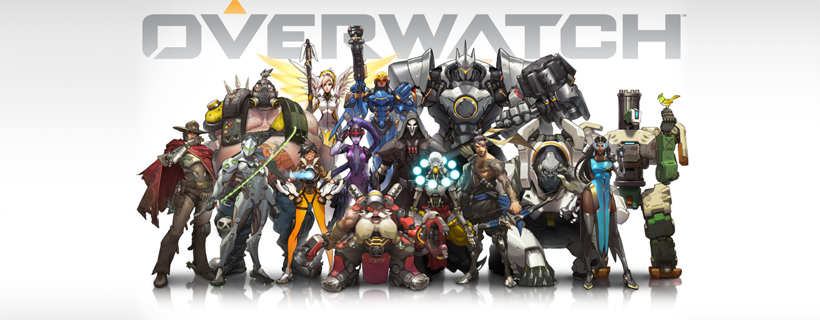A little over a week ago, Blizzard permanently reduced the price of its popular title Overwatch. The standard version of the game now costs $19.99 from the prior $39.99 and the legendary version has dropped to $39.99 from $59.99.
Blizzard discounting a three-year-old game doesn’t seem to be major news. It’s typical for publishers to lower the cost of a game to extend the lifecycle. However, unique to this situation is the franchise league Blizzard has built around Overwatch. We see the price reduction as an indication that Blizzard is trying to find ways to capture new players and further grow its franchise league.
While the price reduction is a step in the right direction, Blizzard would be better off offering Overwatch for free, monetizing instead through in-game purchases and increased interest in its Overwatch League.
Why is free-to-play important?
Making games free-to-play can have a significant impact on the game’s growth as an esport. Consider the three franchise esports leagues: League of Legends, NBA 2K, and Overwatch. League of Legends is and always has been, a free-to-play game. Free makes it easy for people to try League of Legends risk-free. Some of these new players will become esports participants, while others may become fans. Either outcome is a positive for LoL because it’s easier and more enjoyable to watch a professional esports match if you have some familiarity with how the game is played. While NBA 2K isn’t free-to-play, the game of basketball is massively popular around the world and doesn’t need to do much to build its notoriety. Overwatch suffers from being neither free nor familiar in comparison.
What are the challenges of free-to-play?
Offering Overwatch as a free-to-play game can help grow the player base, but Blizzard needs to protect the integrity of the game. There are two issues that become more exacerbated with free-to-play games: keeping matches balanced (competition) and preventing a spike in hacking.
- With a large influx of new players, it can be difficult to find well-balanced games. New players become frustrated when they play against players of a much higher skill level. Experienced players become frustrated trying to coordinate with new players. Without an effective match-making system (for both competitive and casual game modes), there can be huge skill gaps between the teams or even within the teams, which usually is fun for no one. It is also much easier to Smurf, or play on lower ranked accounts, in free games. Players on Smurf accounts, either for easy wins, to mess around, or to play with lower ranked friends, are already an issue for games like Overwatch and free-to-play would presumably make it much worse.
- While not as large a challenge for Overwatch as CS:GO, addressing hacking and toxic behavior is an issue for any game and can be a bigger issue in free-to-play games. There is no good way to punish people for misbehaving (or Smurfing) because they can create a new account. In both Overwatch and CS, players risk losing items they have collected, but most cheaters will not use hacks on an account with valuable items.
How does Overwatch stack up today?
When it comes to growing the popularity of its professional esports league, Overwatch has been at a disadvantage by charging for its game. According to esc.watch, the League of Legends North American Championship Series (NA LCS) had 115K average concurrent viewers and a total of 57M views for its Summer 2018 Final. By comparison, The Overwatch League had 289K average concurrent viewers (excluding China) and a total of 10.8M views. While Overwatch may have a higher CCV number, the total number of viewers is much lower. These comparisons may even underestimate the difference for two reasons. First, NA LCS is not the final championship for LoL. Winners of NA LCS move on to Worlds and compete for a much larger audience. Second, The Overwatch League does draw some international viewers. Comparing the Overwatch League to LoL Worlds 2018 is an even larger discrepancy.
Another way to compare Overwatch to other popular games today is to look at the monthly hours watched Twitch:

While hours viewed on Twitch are not representative of competitive matches, it shows how far ahead LoL and other titles are compared to Overwatch. Of the games on the list, only Overwatch and PUBG charge for the game (although a free-to-play version of PUBG is being tested in Thailand). Fortnite charges for its single-player mode but not its popular battle royale mode (which accounts for a vast majority of hours viewed). CS:GO moved to a free-to-play model in December (the graph above still reflects viewership when it was $15), and Dota 2 was made free-to-play in 2012. We’ve also seen the recent release of EA’s Apex Legends, a free-to-play battle royale game based in the Titanfall universe. In its first 24 hours, Apex Legends picked up 2.5M unique players. If Overwatch wants to expand its viewer base and strengthen the health of its franchise league, it should move to a free-to-play model.
Disclaimer: We actively write about the themes in which we invest or may invest: virtual reality, augmented reality, artificial intelligence, and robotics. From time to time, we may write about companies that are in our portfolio. As managers of the portfolio, we may earn carried interest, management fees or other compensation from such portfolio. Content on this site including opinions on specific themes in technology, market estimates, and estimates and commentary regarding publicly traded or private companies is not intended for use in making any investment decisions and provided solely for informational purposes. We hold no obligation to update any of our projections and the content on this site should not be relied upon. We express no warranties about any estimates or opinions we make.
